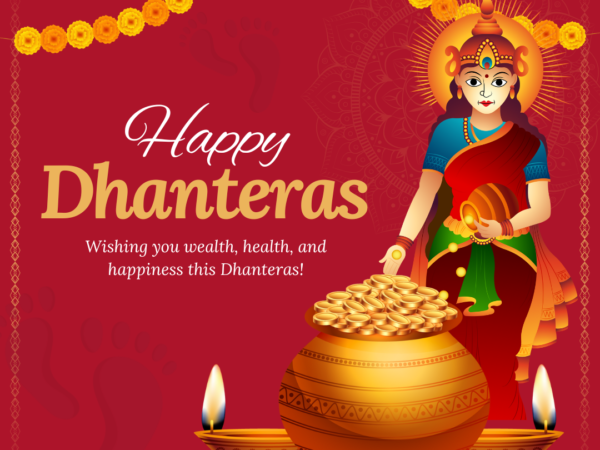[vc_row][vc_column][vc_column_text]Long drawn celebrations and festivities are a part of the social and cultural fabric of India. Among the many religious and social customs that mark the diverse festive calendar of Indians, is a very important religious occasion – Ganesha Chaturthi celebration is about the birth of the Elephant-headed god, Ganesha. It is celebrated with much enthusiasm especially in the states of Maharashtra, Tamil Nadu, Andhra Pradesh and Karnataka.
The Festival
Ganesha Chaturthi in most places in India is a day to invoke Ganesha, the god of wisdom, prosperity and good fortune. On this day, devotees worship Ganesha idols, perform the aarti and offer prasad of fruits and sweets, especially modak, which is considered to be the favourite of Lord Ganesha. In several places, clay idols of Ganesha, big and small, are made months in advance and thousands of devotees take them home to worship. It is customary to immerse these idols in water once the festivities are over with a prayer requesting the god to visit his devotees again the following year.
In Maharashtra
Ganesha Chaturthi is especially popular in Maharashtra, where the festival was invoked by the Maratha ruler Shivaji and then reinstated by political thinker and freedom fighter Bal Gangadhar Tilak. The festivities here last for about 10 days. Ganesha or Ganpati is welcomed into homes and massive pandals in the form of beautiful clay idols. In fact, there are several pandals in Mumbai, which compete against one another, by setting up larger and more impressive idols; there are also prizes to be won for the best pandal. It is a time for devotion and prayer with individual households organising an evening aarti with songs and hymns. Women dress up in the best of their saris and jewellery and make beautiful rangolis outside their homes. This is also a time for family gatherings, visiting friends, relatives and neighbours.
The idol immersion days are the first, third, seventh and tenth days. The immersion ceremony is another grand affair where devotees carry the idol in joyous processions accompanied by thumping music and dancing to the beats of the dhol. Devotees throw gulal at one another and perform a final aarti before immersing the idol in a water body like a lake or sea. The Ganpati festival in Maharashtra, especially Mumbai, is equivalent to the Durga Puja celebrations in Kolkata, West Bengal.
Demand rises for blue-collar jobs: Ahead of the festive season, hiring sees 27% spike over Aug-Oct 2021
Temporary employment has seen a 20% increase ahead of the festive season to address the pick-up in consumer activity, according to Indian Staffing Federation.
With the economy starting to recover from the impact of the brutal second wave and the festive season ahead, hiring across sectors is seeing a spurt, including that for blue-collar jobs. Not all of these jobs are permanent though.
According to Betterplace, a tech platform that manages lifecycles of informal and semi-formal workforces, hiring for blue-collar jobs has seen a spike of 27% over August-October 2021. The demand is emanating primarily from the e-commerce and logistics sectors but even retail and healthcare are looking for people. Typically, hiring for these jobs takes place between August and October, which coincides with the onset of festivals.
As with white-collar jobs, the growth in e-commerce and logistics sectors is primarily fuelling the hiring momentum in the blue-collar segment. Manish Pansari, chief business officer, Betterplace, said demand for delivery executives is coming largely from e-commerce, food delivery segments and all the other tech-enabled delivery platforms. “Be it deliveries for grocery, food, commerce or milk there is demand for executives. Also, food outlets and restaurant chains are looking at hiring delivery folks now as their businesses open,” he said. The hiring in this segment has increased a sharp 36% year-on-year.
As the hiring has picked up, so has the need for reskilling and upskilling the workforce to appropriately respond to changing market needs and have teams that are better aligned with the business objectives. Sanjay Tiwari, co-founder and CEO of 21CC, a recruiting and training firm in the logistics sector, said complexity has also increased. “Many of the contract logistics operations use advanced warehouse management systems to track and deliver goods, and employees need to be able to use these. From the factory floor to the store front and finally to the last-mile delivery boy, the rules of working stand changed for everyone. The need for efficient training is in two short words- immediate and critical,” he explained.
Drivers too are in big demand, according to Pansari, who points out, they are needed for moto-taxis, EVs and three-wheelers. The demand has seen a rise of a sharp 12% y-o-y.
Data show that demand for retail associates — people who assist customers on shop floors and feet-on-street kind of roles like field salesman for banking and insurance sectors – is making a slow comeback. The healthcare segment is also seeing a pick-up in hiring of general duty assistants, caretakers and phlebotomists.
[/vc_column_text][/vc_column][/vc_row][vc_row][vc_column][vc_column_text][/vc_column_text][/vc_column][/vc_row]




